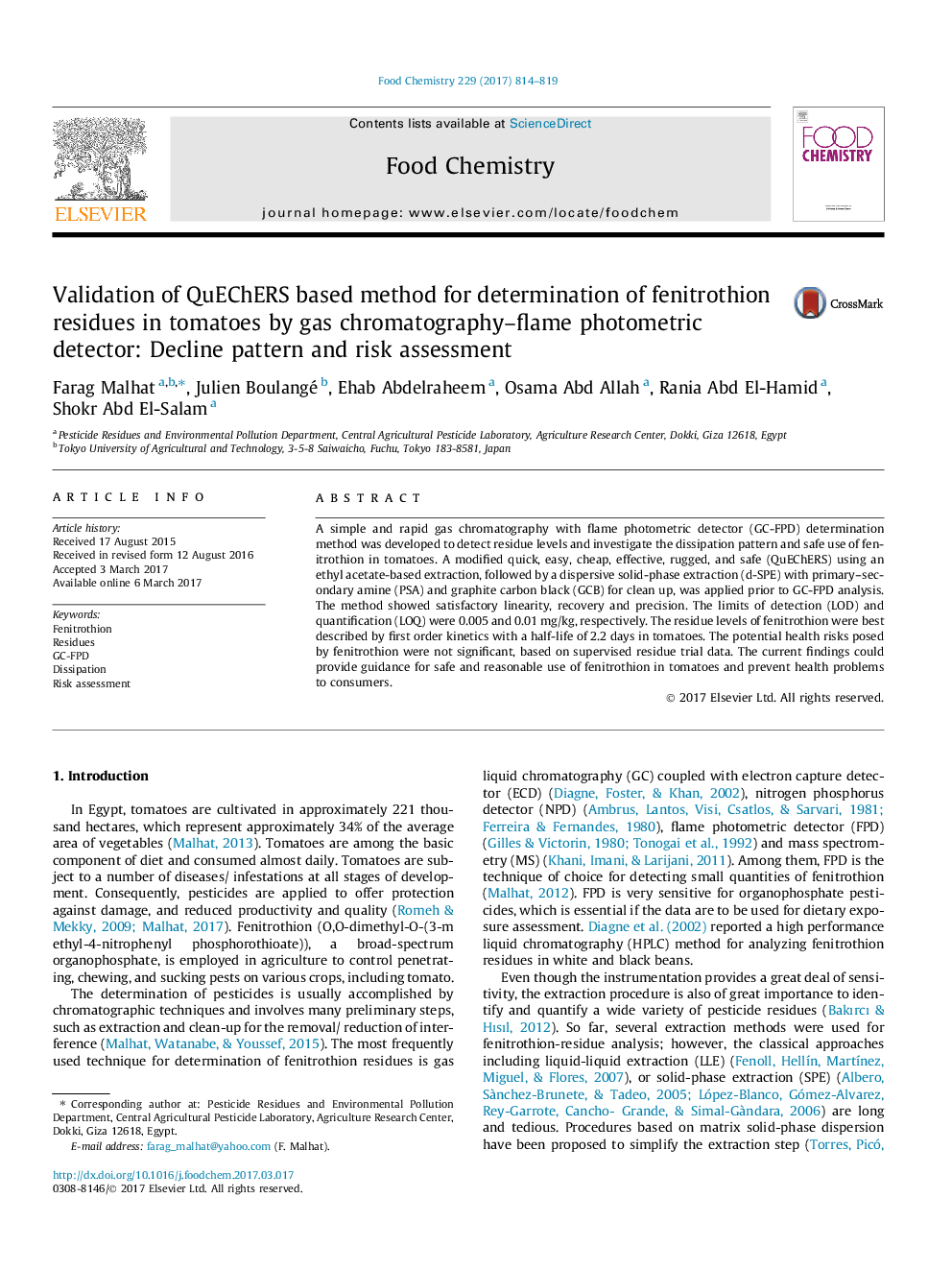| Article ID | Journal | Published Year | Pages | File Type |
|---|---|---|---|---|
| 5133672 | Food Chemistry | 2017 | 6 Pages |
â¢Fenitrothion residue analyses were carried out using a validated GC-FPD method.â¢Fenitrothion dissipation kinetics in tomatoes were studied.â¢Half-life and other kinetic parameters were established.â¢Health hazard and safe use were evaluated.
A simple and rapid gas chromatography with flame photometric detector (GC-FPD) determination method was developed to detect residue levels and investigate the dissipation pattern and safe use of fenitrothion in tomatoes. A modified quick, easy, cheap, effective, rugged, and safe (QuEChERS) using an ethyl acetate-based extraction, followed by a dispersive solid-phase extraction (d-SPE) with primary-secondary amine (PSA) and graphite carbon black (GCB) for clean up, was applied prior to GC-FPD analysis. The method showed satisfactory linearity, recovery and precision. The limits of detection (LOD) and quantification (LOQ) were 0.005 and 0.01Â mg/kg, respectively. The residue levels of fenitrothion were best described by first order kinetics with a half-life of 2.2Â days in tomatoes. The potential health risks posed by fenitrothion were not significant, based on supervised residue trial data. The current findings could provide guidance for safe and reasonable use of fenitrothion in tomatoes and prevent health problems to consumers.
